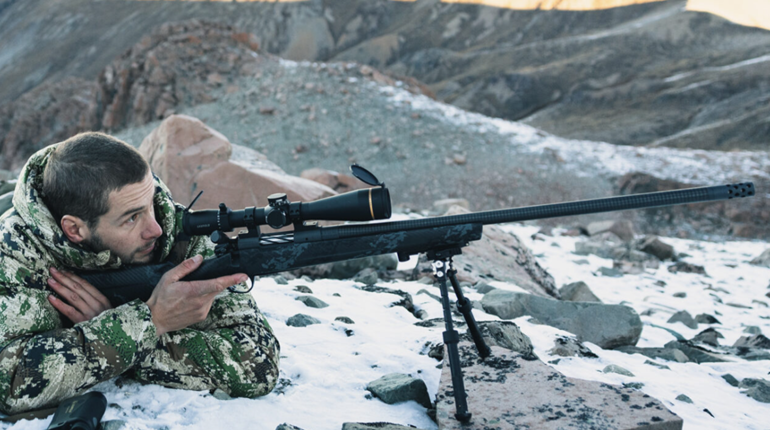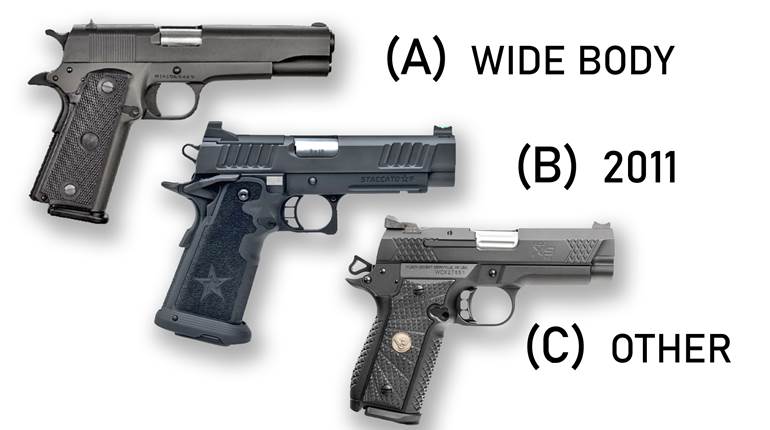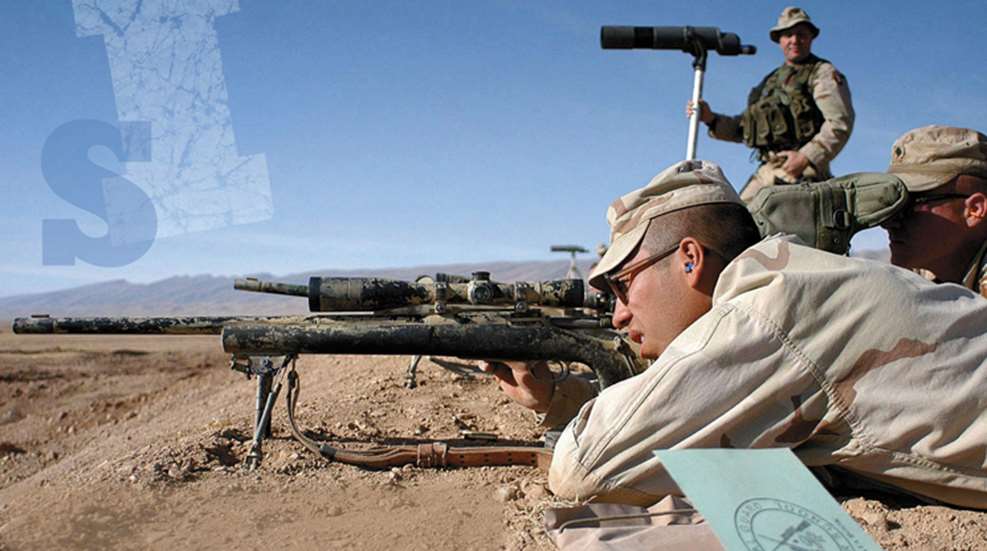
This article first appeared in the April, 2004 issue of American Rifleman.
“Seriously?” That was my response when I heard the accuracy results we were receiving from the U.S. Army M24 Sniper Weapon System (SWS) we had received for evaluation and were firing at the Test and Evaluation Facility at the Quantico, Va., Marine Corps Base. Specifically, I was reacting to the roughly 1 1/2" groups we were printing at 300 yds. with the rifle rigidly locked into the facility’s Universal Return To Battery Fixture.
“Yes,” responded S/Sgt. Aman, “but that is pretty common for these rifles.”
I was a bit taken aback by his phlegmatic response, but the more I thought about it, the more it began to make sense. The M24, based on the tried and true commercial Remington Model 700, should have inherent accuracy “builtin.’
But let’s back up a bit. Two weeks earlier, I was sitting in my office when Editor-in-Chief Mark Keefe walked in, sat the 7.62x51 mm M24 on my desk and said, “I am going to make your day and assign you an article on this.” As Mark has a pretty good idea of the type of firearms I like, he knew I would be very interested in writing up this one. My first task, however, was to research the background of the M24. I did know that the M24 has been available to the law enforcement community for roughly the past two years, but my knowledge of the rifle’s military background was a bit sketchy. The following is what I found.

From the 1950s to the 1980s, the Army had utilized primarily semi-automatic sniper rifles. First were sniper versions of the Ml Garand (the MIC and MID). Later, in the 1960s, the M21, an accurized M14, was adopted. Although the M21 offered faster follow-up shots than a comparable bolt-action rifle, many felt it had some deficiencies. The wood stocks had a tendency to warp, which would in turn affect point of impact. Additionally, the bedding used to accurize the M21 could give way after a few thousand rounds, and scopes could sometimes fail to maintain zero.
By the 1980s, many realized that the M21 was not adequate and pushed for a new SWS. The move came about because of the increasingly important role snipers were playing in the military, and the realization that future conflicts may be in flat, open desert terrain rather than the rolling hills and thick forests of Europe.
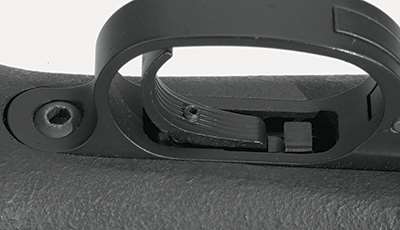
In 1985, a survey was issued to the firearm manufacturing community that requested proposed specifications for a new sniper rifle. The contract was awarded to Remington Arms Co. two years later. After extensive testing, the rifle was approved by the U.S. Army in 1988 and became the M24.
And, now, there was sitting in front of me a current production sample of the default sniper rifle used by the U.S. Army for the past decade and a half. Other than a change in the type of back-up iron sighting system, it was the same rifle as the one introduced in 1988.
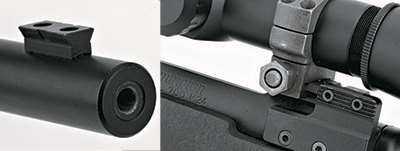
I must say, the M24 certainly is impressive. As a complete unit, the M24 SWS includes the following; a rifle mounted with a Leupold Mk IV M3 10x42 mm scope in Mk IV rings; OK Weber iron sights; Harris bipod; a deployment kit that includes a cleaning kit, tools and emergency replacement parts; M1907 sling; drag bag; and an operator's manual—all in an extremely heavy duty case.
Those familiar with a basic Model 700 rifle will feel right at home with the M24.It is chambered in 7.62x51 mm NATO (.308 Win.) and has an internal, non-detachable magazine with a capacity of five rounds. All metal surfaces of the M24 feature a powder-coated "Rem-Tuff" finish, and the synthetic stock is coated with an epoxy-based black coating that is both non-reflective and non-slip. The overall weight of an unloaded M24 without the scope is 12 lbs. Scoped and loaded, the M24 weighs 15 lbs.
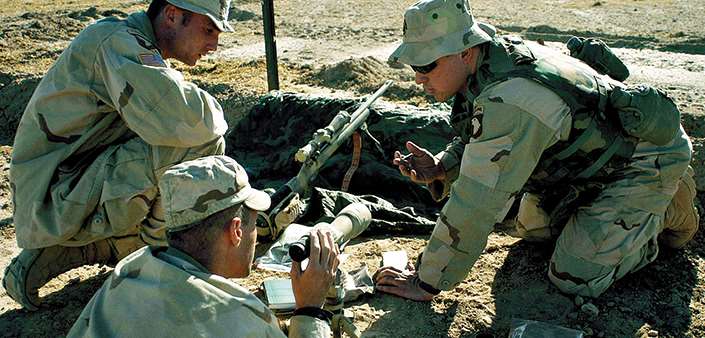
The Remington-made, free-floating barrel is 24" in length and hammer-forged from 416R stainless steel. Although it is a bull barrel, it does have a slight taper, measuring roughly 1.20" at the breech going down to roughly 0.90" at the muzzle. The barrel has five-groove 5R right-hand twist rifling with one turn in 11.25" and features a recessed muzzle crown.
 The action itself is a pretty straightforward Model 700, except for one interesting fact—it is a long rather than short action. The obvious question is, why wouldn't a rifle chambered in 7.62x51 mm (.308 Win.) be a short action? A little research revealed that the M24 SWS was designed as a long action at the behest of the special operations community. Although the 7.62x51 mm is an excellent performer out to most practical distances, some wanted the option of switching out a limited number of M24s to a longer chambering (such as .300 Win. Mag.) for use at greater ranges.
The action itself is a pretty straightforward Model 700, except for one interesting fact—it is a long rather than short action. The obvious question is, why wouldn't a rifle chambered in 7.62x51 mm (.308 Win.) be a short action? A little research revealed that the M24 SWS was designed as a long action at the behest of the special operations community. Although the 7.62x51 mm is an excellent performer out to most practical distances, some wanted the option of switching out a limited number of M24s to a longer chambering (such as .300 Win. Mag.) for use at greater ranges.
Handling of the M24 reveals a solidly built rifle. Of special note is the fact that the trigger guard and magazine floorplate are solid steel, as supplied by Dakota Arms. The guard itself is one solid piece, and the floorplate is a separate piece that hinges on a pin on the front of the guard. The M24s trigger is externally adjustable for pull weight via a screw located on the face of the trigger. It can be adjusted as heavy as 4½ lbs. and as light as 2½ lbs.
The stock of the M24 represents a joint design effort by Remington and H-S Precision. It is made from Kevlar-reinforced fiberglass and is ambidextrous, featuring a non-adjustable high comb and double palm swells. Additionally, the barrel is completely free-floating in the stock and the fore-end has a flat, benchrest-style bottom. This stock is an answer to the problems faced by the M21’s wooden stock, as its fiberglass material is practically impervious to warpage.
To ensure the utmost accuracy, the stock houses an aluminum bedding block that is rigidly molded in with polyurethane foam reinforced with fiberglass. The action is screwed into the block with two screws torqued to 65 in.-lbs.
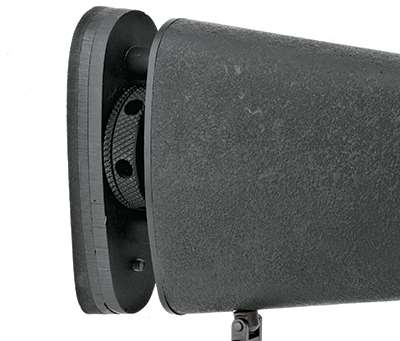
One of the M24's more interesting features is its adjustable aluminum alloy buttplate that allows the user to change the length of pull from 12" to 14". This is done by simply twisting the knurled, finger-adjustable nut to extend or retract the buttpad to a comfortable length and then tightening down the lock nut.
As with most contemporary tactical bolt-action rifles, the M24 features dual sling swivel studs on the fore-end, intended to allow for the simultaneous use of a Harris bipod and a sling.
One of the design requirements for the M24 SWS project was that the rifle should have emergency back-up iron sights. The originals were made by Redfield, but the current sights are supplied by OK Weber. They attach via a front dovetail and a rear plate, and feature a graduated peep system that is adjustable for windage and elevation.
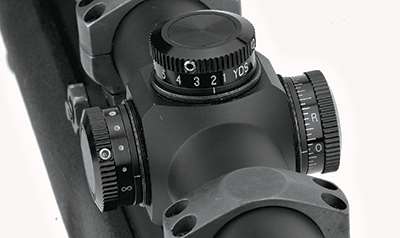
The Leupold Mk IV M3, the M24’s optic, is a fixed-power 10x42 mm scope with a 30 mm tube and Mil-dot reticle. The M3 features an elevation dial with one-minute click increments and, for windage adjustment, one-half-minute increments. Additionally, a turret-mounted focus eliminates the need for a separate parallax adjustment and all lens surfaces are multi-coated for optimum light gathering.
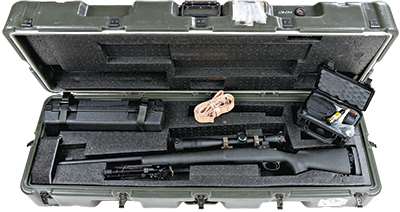
As stated earlier, I took the M24 out to the Test and Evaluation Facility at the Quantico Marine Base. The rifle, locked into the Universal Return To Battery Fixture, was fired for accuracy. It consistently performed well, but the rifle did show a slight preference for heavier bullets as shown in the accompanying table. Functioning was flawless, with no failures to feed or eject.
The M24 seemed to do everything it was designed to do, and more. In speaking with Ed Schoppman, Manager of Remington's Military Products Division, I discovered there is more on the horizon for the M24. An upgraded version, called the M24-A2, will be released in coming months and will possess modifications that are a direct result of contact with active duty snipers. Keep an eye out in the pages of this magazine to learn more.
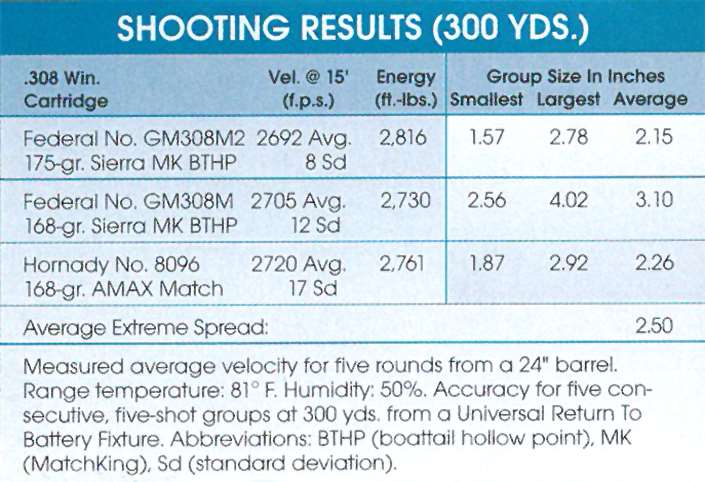
First Impressions
After having inspected the rifle, I determined that it would be helpful to get an opinion on it from both the law enforcement and military communities.
For a military perspective, I spoke to NRA Secretary Edward J. Land, Jr„ who served in the Marine Corps from 1953-77 and was instrumental in developing the Marine Corps' sniper rifle program in the post-Vietnam War era. On the law enforcement side, I spoke to PFC Jeff Bruggeman of the City of Fairfax, Va., Police Department. He is a 13-year veteran of the SWAT team and has, for the past 11 years, been a SWAT sniper. For the past two-and-a-half years he has also been a Sniper Team Leader.
Land, upon examining the M24, commented that the Army’s move to a bolt action was a smart one. “Frankly, you should only be firing one or two shots,” he said. “And semiautos throw the brass out automatically. That flash of brass could give your position away.” He also pointed out that a solidly built boltaction will maintain its zero—a quality of the utmost importance. “Although precision accuracy is important, it is still subordinate to maintaining zero. I would rather have a rifle that shoots three m.o.a. and keeps it zero than a one m.o.a. rifle whose point of impact shifts.”
As an overall impression of the rifle, Land said that the M24 was a great deal closer to what he thinks a modern sniper rifle should be. “Although this one is still heavier than I would like to see, it comes a lot closer to a realistic concept of what these rifles should be,” he said. He pointed out that the barrel taper is a positive attribute, because untapered bull barrels do not promote additional accuracy for the first couple shots but simply minimize the effects of barrel heat after firing multiple shots.
Bruggeman uses a rifle that is quite similar to the M24. It was custom-built from a Remington Model 700 PSS. As soon as I handed the M24 to him, he nodded and smiled while inspecting it. “This strikes me as a very wellthought out, standard sniper rifle system,” he said. “As a complete base system, this rifle package is just about right. I would think that this would be an excellent, outofthebox sniper rifle for a department,” he continued.
I asked him how this rifle compared to the one he had built for use as a SWAT sniper. “Other than some differences, such as the backup iron sights and the scope’s reticle, the M24 is just about what I would ask to be built. Off the shelf, this appears to be ready to go,” he added.













